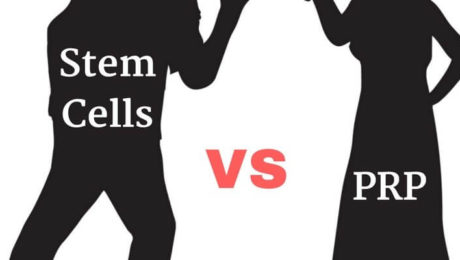Platelet-Rich Plasma Vs Stem Cell Therapy: Who’s Bad?
Platelet-Rich Plasma (PRP) Therapy Explained
Learn how PRP utilizes natural healing mechanisms to enhance tissue repair and manage joint issues like arthritis.
Stem Cell Therapy: A Revolutionary Approach
Explore the potential of stem cell therapy in regenerative medicine and its applications in treating various orthopedic conditions.
Comparing PRP and Stem Cell Therapy
Mechanisms and Applications
Differentiate between PRP and stem cell therapy, highlighting their unique roles in healing and tissue regeneration.
Benefits of Platelet-Rich Plasma (PRP) Therapy
Advantages Over Stem Cell Therapy
Discuss the specific benefits of PRP, such as safety and simplicity, compared to more complex stem cell procedures.
Risks and Considerations with Stem Cell Therapy
Potential Drawbacks
Examine the risks associated with stem cell therapy, including concerns about uncontrolled growth and immune responses.
Conditions Treated with Stem Cell Therapy
Orthopedic Applications
Explore common orthopedic conditions effectively treated with stem cell therapy, including arthritis and joint injuries.
Conclusion: Choosing the Right Treatment Option
Making Informed Decisions
Summarize key points to help patients and healthcare providers make informed choices between PRP and stem cell therapy.
Future of Regenerative Technologies
Trends and Innovations
Look ahead to the future of regenerative medicine, discussing advancements and potential developments in both PRP and stem cell therapies.
References and Further Reading
Ensure comprehensive citations and references to support claims and information presented about PRP and stem cell therapies.
- Published in Blog
Platelet-Rich Plasma Stays Quietly Popular Despite Neglect
Introduction
FRIDAY, 27 APRIL 2018 / PUBLISHED IN BLOG
Fact: PRP Treatments in High Demand
According to research, PRP treatments are one of the most in-demand treatments available in healthcare. This is impressive considering the following:
- PRP is not supported by the medical industry. No big pharma funding on extensive research or marketing. No medical associations lobbying to increase its awareness.
- PRP is shunned by the insurance companies. No reimbursements from them. So getting patients to pay is difficult, especially for a treatment that’s relatively “unproven” like this.
- The cost of PRP treatments is actually rising. In 2006, you could get a PRP treatment for $450. Today it costs $800. The cheapest we’ve seen is $650. The prices are still robust as demand keeps up.
The Future Potential of PRP
We believe the best of PRP is not even here yet. We’re just one breakthrough study away from exploding into mainstream hospitals and clinics. We see the biggest growth in Platelet-Rich Plasma happening in Asia.
Strongly Based on Fundamental Healing Theory
The growth can be attributed to PRP’s fundamental healing property. More platelets. More growth factors and cytokines. And therefore more healing. It’s as simple as that. And no one can argue this fact.
Our body’s natural healing mechanism operates with 150,000/ul-350,000/ul platelets in blood. Using Platelet-Rich Plasma means this number is amplified by 3X to 5X. How can this not translate into better healing?
Believe it or not, the best orthopedic doctors use Platelet-Rich Plasma regularly.
PRP’s Applications and Effectiveness
PRP can be used to promote healing of injured tendons, ligaments, muscles, and joints and can be applied to various musculoskeletal problems. They conduct regular studies to test its effectiveness.
Key Study on PRP and Chronic Low Back Pain
One landmark study involved double-blind randomized controlled trials to see the effect of PRP on patients with chronic low back pain caused by torn discs. The study outcome says 60% of the patients felt significant improvements. Some were cured.
Different Variants of Platelet-Rich Plasma
So far, there are the following types of PRP variants:
- Plasma Rich in Growth Factors (PRGF)
- Plasma Rich in Platelets and Growth Factors (PRPGF)
- Platelet-Rich Plasma (PRP); Platelet Poor Plasma (PPP)
- Plasma Rich in Platelets and Rich in Leukocytes (LR-PRP)
- Plasma Rich in Platelets and Poor in Leukocytes (LP-PRP)
- Platelet-Rich Fibrin Matrix (PRFM)
All of them involve plasmapheresis — the two-stage centrifugation process to separate platelets from blood. However, what happens after that can be different. The industry hasn’t found its middle ground as to which variant to be standardized. We believe the confusion will clear up in 3-5 years.
Bio-Factors at Play in PRP
No matter which variant you end up using, the bio-factors at play are the following:
- Growth factors: TGF-B, PDGF, IGF-I, II, FGF, EGF, VEGF, ECGF
- Adhesive proteins: Fibrinogen, Fibronectin, Vitronectin, Thrombospondin-1
- Clotting & Anti-Clotting factors: Proteins, Antithrombin, Plasminogen, Proteases, Antiproteases
How Platelet-Rich Plasma Actually Works
Why is the treatment commonly used for wound healing and pain management? The answer is because the platelets’ main job is to aid coagulation, act as a biological glue, and support stem or primary cell migration. In addition, it also helps in restoring hyaluronic acid and accelerates the synthesis of collagen and glycosaminoglycans, increasing the cartilage matrix.
Not only that, the platelets are delivered in a clot, which means it can immediately act as a scaffold to enable the healing process. 95% of the bio-active proteins are released within 1 hour of injecting Platelet-Rich Plasma. The platelets continue to release growth factors for 7-10 days. Thus it’s recommended to re-inject PRP every 7 days.
Patient Perspective on PRP Costs
Why are patients coughing up their hard-earned money for this?
This reminds me of hundreds of thousands of PRP treatments paid from patients’ own pockets even though they’ve been paying for years to get covered by their respective insurance providers. In 2015, PRP costs were anywhere between $600 and $800 per site per treatment. And most patients go for repeated treatments. So why were they forking up their hard-earned money if the treatment was not working? Weren’t there any better alternatives under the “coverage” of their insurance provider? The answer is 1) the treatment works. 2) there’s nothing else out there that’s as natural and side-effect-free as PRP.
PRP and Osteoarthritis
Consider the case of osteoarthritis. 27 million Americans are impacted by it. 33.6% of people older than 65 are victims. All of them experience gradual degeneration of cartilage and bones — they lose roughly 5% of cartilage per year. Yet, our medical industry doesn’t have a fix to stop it.
However, when doctors started doing PRP treatments for their osteoarthritis patients, they found a large majority of them had no further cartilage loss. To me, it means we should make PRP treatments the default first-line treatment for osteoarthritis across the country.
PRP in Hair Loss and Cosmetic Applications
Another huge market is hair loss and cosmetic facial applications. I know there are many people who believe PRP doesn’t work for hair. Here’s what one of the Platelet-Rich Plasma studies found were the effect of the treatment on hair loss.
“Hair loss reduced and at 3 months it reached normal levels. Hair density reached a peak at 3 months (170.70 ± 37.81, P < 0.001). At 6 months and at 1 year, it was significantly increased, 156.25 ± 37.75 (P < 0.001) and 153.70 ± 39.92 (P < 0.001) respectively, comparing to baseline. Patients were satisfied with a mean result rating of 7.1 on a scale of 1-10. No remarkable adverse effects were noted.”
I’ll take that. That’s me getting PRP for hair.
PRP Market Growth
The PRP market is expected to hit $126 million in 2016. That number looks paltry. But that’s a 180% increase over the 2009 figure of $45 million.
Consider this. Just for osteoarthritis alone, if all the 27 million Americans receive 1 PRP shot a year at a conservative $400 per treatment, it would be a market of $10 billion. And that’s one condition out of the many that Platelet-Rich Plasma injections are proven to work.
PRP and Tennis Elbow
Another condition that PRP is known to work very well is Tennis Elbow. It affects on average 1% to 3% of the overall population. That number is as high as 50% among tennis players.
Insurance Coverage and PRP
Just getting Platelet-Rich Plasma covered by insurance will unleash the market big time and will help heal millions of patients naturally, more effectively.
Oh ya, that means the insurance companies will have to pay more. Why would they?
Potential Savings for Insurance Companies
HOWEVER, if this treatment could reduce further expensive intervention like surgery, then it may actually be a blessing for the insurance guys in terms of savings. One surgery avoided by a patient through the right intervention through PRP treatments will save the insurance companies at least $25,000. Now, that’s a win-win for both patients and insurance.
I believe it’s a matter of time before insurance companies start realizing their folly of not supporting this treatment.
PRP Still Considered “Unproven”
After all is said and done, it’s still “unproven.” The problem with PRP is that it can be used for just about everything, which is a good problem to have until healthcare officials (and insurance companies) start realizing that people are going to misuse it.
So it’s classified as unproven. The VAST scope of the treatment calls for urgent structure and guidelines. There are some 20+ conditions where researchers have found it “helps” in one way or another. It’s a daunting task to prove its efficiency in all the areas. Nevertheless, we’ll get there. Though we’ll need a lot of funding for that.
Need for Standardization
And yes, we need to standardize the procedure. As well as come up with optimized protocols for each condition. Someone needs to take initiative on that. We’re counting on independent doctors and medical institutions. The big pharma won’t jump in because what’s in it for them, right?
Simplicity and Accessibility of PRP
It’s so simple, you’d be an idiot not to try it. You only need a vacuum blood harvesting tube like what we offer here, a centrifuge with an adapter for the tube, pipettes, and 10ml ampules of 10% calcium chloride.
The only complexity comes from not following a standard PRP system. Because the final platelet count can depend on a variety of factors like the initial volume of blood, the technique used, and the relative concentration of WBC and/or RBC. As well as on the patient’s side, there are factors such as age.
- Published in Blog




